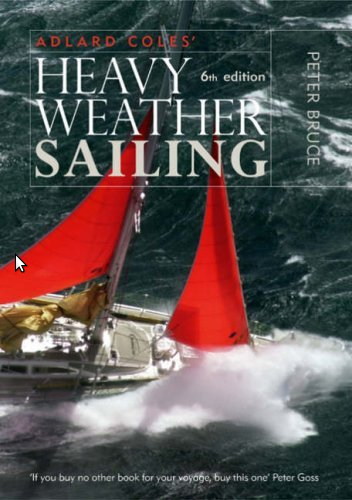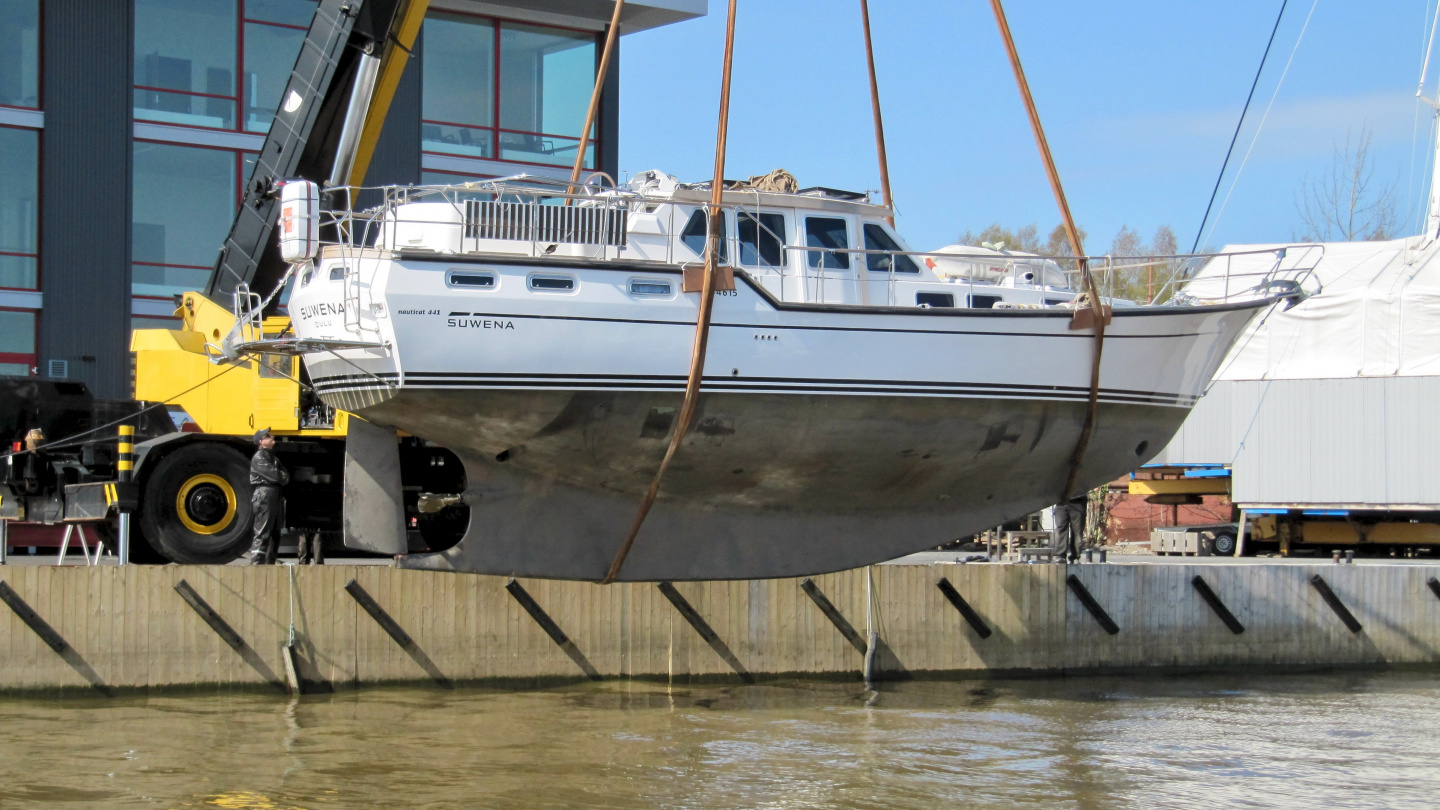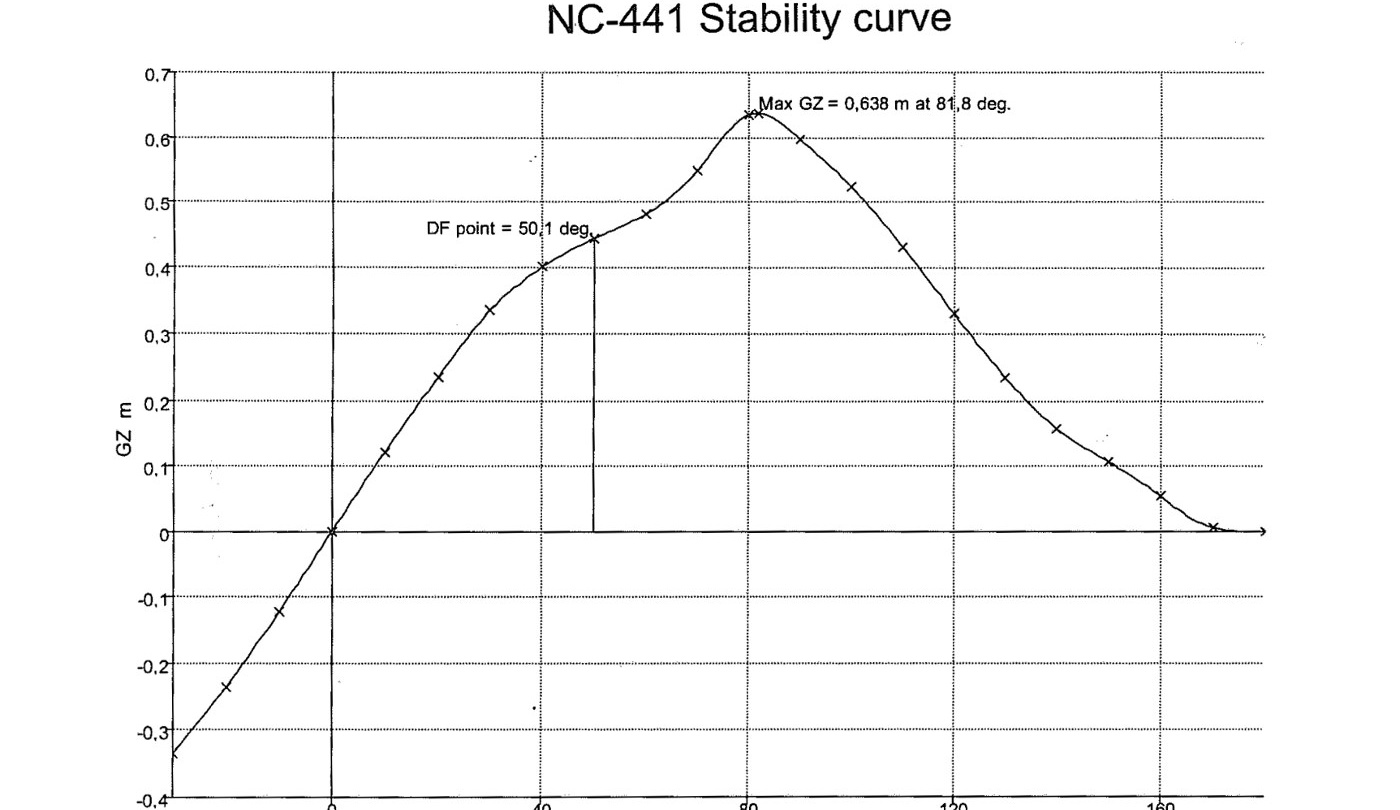One of the most known books in ocean sailing is the Heavy Weather Sailing by Peter Bruce. We bought this book at the time when we planned to purchase a sailing boat and extend our cruising area. Thus we were very excited to find out that he was coming to give a talk about heavy weather sailing in Helsinki Boat Show 2013.


The lecture was definitely the highlight of this year’s boat show. The hall was completely packed with over 200 enthusiastic sailors.
The speech followed loosely the content of the Heavy Weather Sailing book. He told about real situations of the ocean sailing competitions where sailors were at the mercy of the weather. Peter compared properties of different boats like for example beam, weight, center of gravity, freeboard height and how these properties affect boats behavior in storm. As an example he used actual events from ocean sailing competitions like Sydney Hobart Race and Fastnet Race.
In addition he presented storm survival techniques at sea. We learned about heaving to and using storm sails, sea anchors and drogues.
A meaningful detail from the lecture was about modeling the vessel’s behavior in waves with the help of the wave simulator and boat models. From the simulator experiments it is possible to derive results on how big the wave needs to be for it to capsize the boat. The conclusion was that when the wave height is one third of the boat’s hull length it can capsize the boat. Whereas the wave with the height of two thirds of the hull’s length will most probably capsize the boat. The results were the same regardless of the hull’s or keel’s shape.
As the boat turns over, the keel’s ballast tries to bring the boat back upright. The length of time the boat stays upside-down can be estimated by using the boat stability curve. AVS (Angle of Vanishing Stability) is the point on a stability curve after which the boat will not straighten by itself anymore. The smaller value the AVS is, the longer it takes before some external event causes the boat to recover again. Peter also presented images of yachts which were unable to recover at all.
We warmly recommend his book to anybody who is interested in the ocean sailing. We noticed that Peter Bruce has the utmost experience on this subject and all questions were answered professionally not forgetting a nice humorous fills here and there.
After the lecture we pondered about the seaworthiness and stability of our own Suwena. According to the stability curve the AVS of Nauticat 441 is 170 degrees. It means in case our boat has turned upside-down she recovers very quickly. Such a high AVS is typical for a pilothouse sailing boats.


Nauticat calculates the stability curve with boat’s standard options. On the other hand Suwena has furling sails which raise the boat’s center of gravity and waken the AVS. However she has 240 kg Westerbeke generator and 6 * 64 kg of batteries installed below the waterline. So to our understanding Suwena’s AVS is at least as good as shown on Nauticat’s stability curve.
On the stability curve we can also see the downflood angle (DF). In Nauticat 441 the water will first enter from the open side door. We have agreed between us that at sea we definitely must keep the doors shut and always use the windward door to enter the pilothouse. The side doors by themselves are watertight.
All together by using the metrics form the Heavy Weather Sailing book we have a very seaworthy boat!


Felicidades Eva y Andrus, por
Felicidades Eva y Andrus, por este magnifico blog que con vuestras aventuras náuticas estáis construyendo.
Yo también soy aficionado a la náutica como vosotros y os he encontrado siguiendo la estela de ese magnífico barco que es el Nauticat 441. Por cierto, muy interesante el detallado proceso de compra, vuestras explicaciones sin duda nos ayudan a todos en el siempre dificil camino de la compra.
Solo quiero animaros a seguir disfrutando de esta afición común y que en el futuro llevéis a cabo, junto con ese gran barco, todos vuestros sueños.
Desde Bilbao, España, recibir un afectuoso saludo.